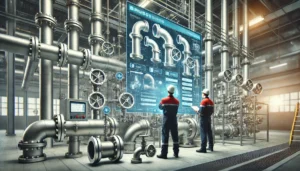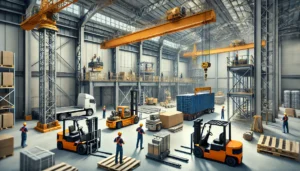Excellent pipe fitting determines whether a leak will occur or not, and influences a plumbing system’s effectiveness. Even small leaks can lead to catastrophic water losses, increased bills, and even possible water infrastructure damage years down the road. For these reasons, an understanding of why correct pipe fitting installation should be prioritized is necessary for both handymen and professionals alike.
Understanding Pipe Fittings and Their Functions
Pipe fittings are important elements in pipework and are designed to connect and control the flow of different fluids through pipes. They can be elbows, tees, reducers, couplings, and unions, among other types. Each type fulfills a specific task: altering the flow direction, connecting 2 pipes, or even constricting the flow area by pipe size. The materials that are used to manufacture these products depend on the application; brass, copper, or stainless steel are common metals, while PVC and CPVC are common plastic materials.
Some of the Reasons Behind Leaks on Pipe Fitting
Fitting of pipes is one of the most prone areas to leakage because of a few things not done quite right and in most cases it is installation related. Let’s see some of the reasons that lead to leakage in the installation phase.
- Over-tightening or Under-tightening: A loose joint will lead to a leak, whereas a joint that is too tight will damage the pipe threads. Both of these actions are fitted with a problem.
- Incorrect Use of Sealants: Sealants that are incorrectly used can potentially lead to leaking. Also the type of sealant added during sealing plays a crucial part in determining how strong the seal is.
- Damaged Threads: When the fitting has suffered damage to its threads, the seal that is created by the fitting cannot be held tightly enough for the connection not to leak.
- Misalignment: Stress on the joints due to the pipes and fittings not being aligned also leads to leakage.
Best Practices for Proper Pipe Fitting Installation
- Select the Appropriate Fitting and Material: Ensure that the pipe fittings chosen are the right size and material for the application. The material of the fitting should be compatible with the pipe and the type of fluid it will carry to ensure a reliable connection and prevent corrosion or wear.
- Clean and Inspect Threads: Before installation, clean the threads of the pipe and the fitting to remove any debris, rust, or old sealant. This will ensure that the fitting can make a proper connection. It’s also crucial to check for any damage to the threads, such as nicks or burrs, that could hinder a secure seal.
- Apply Sealant Correctly: The correct type and amount of sealant should be used. For threaded connections, it’s common to use Teflon tape or a pipe joint compound. The tape should be wrapped around the male threads in the direction of the thread spiral, typically covering the threads completely without excessive buildup.
- Tighten Fittings Properly: Hand-tighten the fitting initially, and then use the appropriate tool to tighten further. It’s important not to over-tighten, as this can damage the fitting or pipe. Similarly, under-tightening may cause leakage, as the seal will not be strong enough.
- Align Pipes and Fittings: Proper alignment of pipes and fittings is key. Misaligned pipes can place stress on the joints, causing premature wear or failure. When installing fittings, ensure that all connections are lined up properly to avoid unnecessary stress on the system.
- Test the System: After installation, it is essential to pressurize the system gradually. Check each joint carefully for any signs of leaks or issues. If leaks are found, address them immediately before the system is put into full operation.
Common Mistakes to Avoid
- Using Incorrect Tools: Using unfit tools for a specific fitting can damage the fitting or pipe. E.g, A wrench that does not have the right size will apply uneven force towards the fitting resulting in damage.
- Skipping Cleaning Steps: Not cleaning the threads or surfaces with dirt, rust, or old sealant will lead to an improper seal and make the installation prone to leaking. surfaces with dirt, rust, or old sealant will create a leak.
- Ove-rtightening Connections: Over-tightening connections may seem like they will help form better seals, but they can actually lead to warping of the pipe or fitting and threads which will in turn cause leaks.
- Ignoring Manufacturer Instructions: The guidelines provided should always be followed to help avoid malfunction or leaks which come from improper installation.
Conclusion
Correctly fitting the pipes goes a long way to prevent leaks and increase the life of plumbing systems. Following best practices like using the right fitting and material, sealant application, proper alignment, and tightening can drastically improve plumbing systems. Additionally, regular inspections and maintenance of the system are also vital in keeping the system leakfree. When dealing with professional systems or doing it yourself, taking proper steps in detailing the pipe fittings will reduce the chances of leaks and improve overall system performance.










